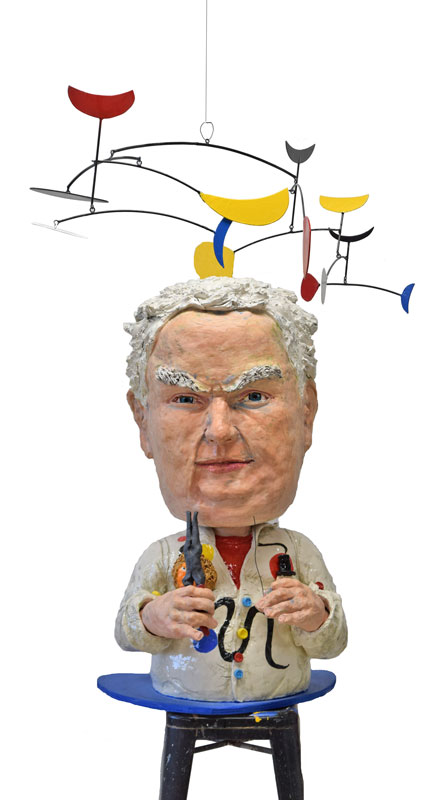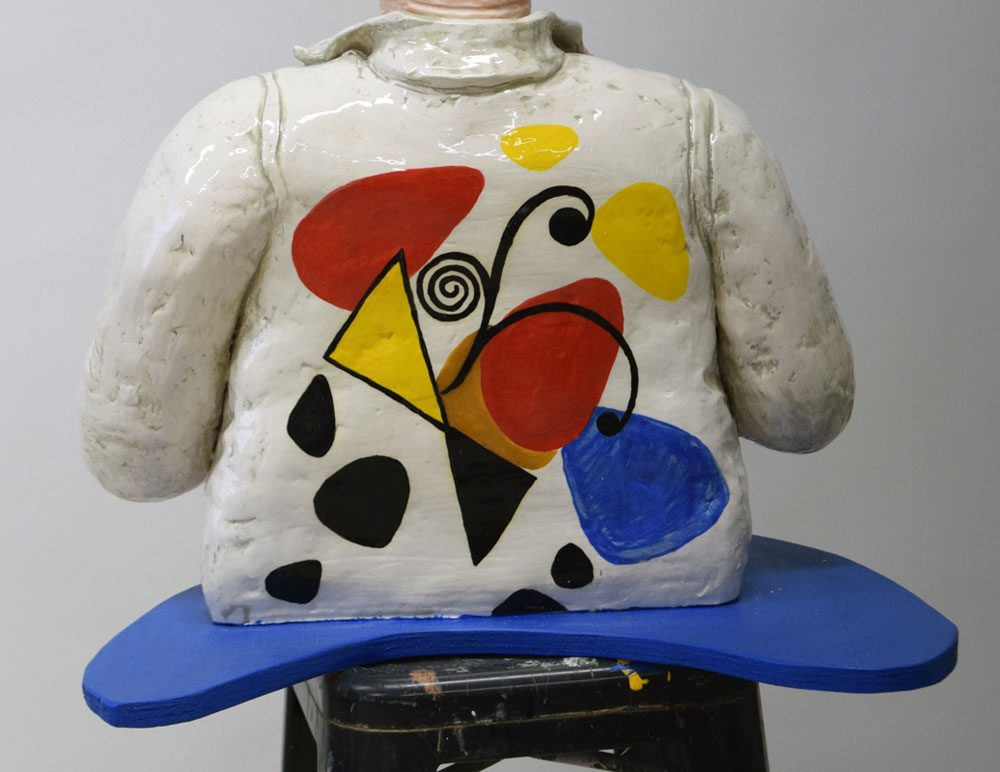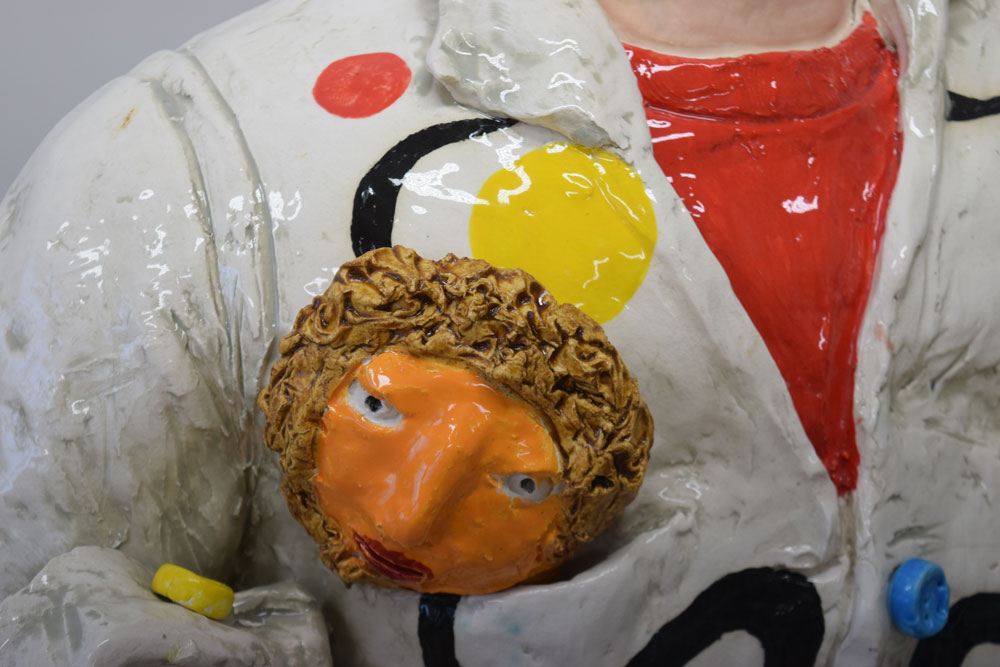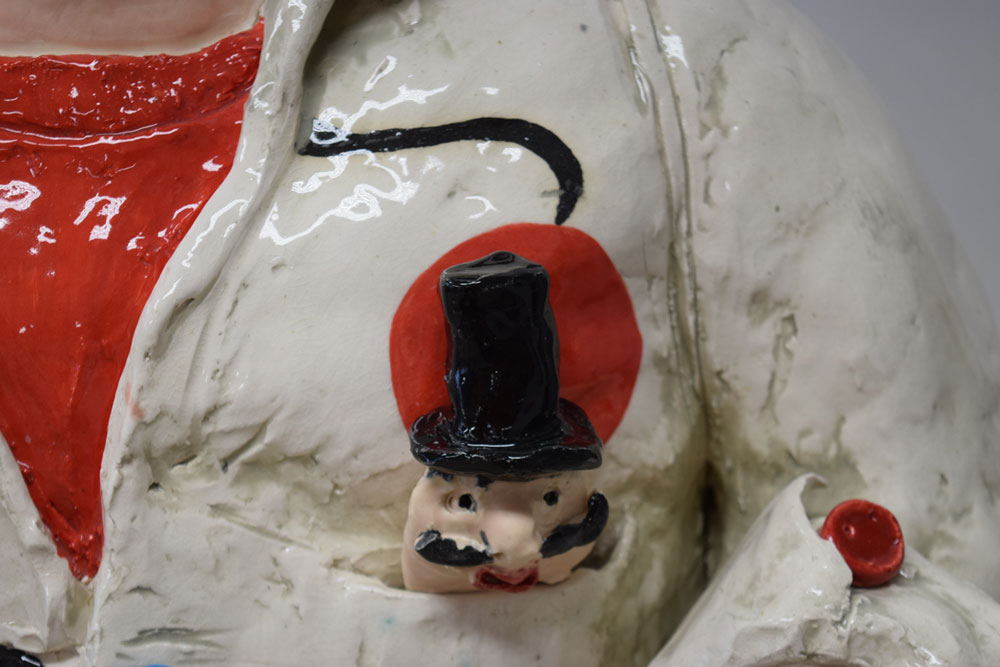“Calder”
(Portrait of Alexander Calder)
68″ x 36″ x 28
Ceramic and Metal. (Mobile made by Joe Scarpa)
2021
Details
![]()

“Calder”
(Portrait of Alexander Calder)
68″ x 36″ x 28
Ceramic and Metal. (Mobile made by Joe Scarpa)
2021
Details
![]()



Like Picasso, Alexander Calder is one of the giants of 20th-century modern art, and Tony recalls seeing Calder’s mobiles, stabiles, and smaller-scale sculptures in the museums he visited with his family in New York City. Cirque Calder (1926-31), Calder’s miniature articulated sculptures of a circus troupe, left a lasting impression when Tony saw it on display at the Whitney Museum of American Art. Like all young children (and perhaps many of their parents), Tony was enthralled with Calder’s toy-like figures of circus performers and animals, accompanied by the nearly 100 props Calder used in the performance. Even as a youngster, Tony understood the expansiveness of Calder’s imagination and the childlike wonder that motivated Calder to fabricate these figures from the simple materials of wire and wood, fabric and string. In preparation to sculpt Calder’s likeness, Tony flashed back to his childhood experience and drew upon the whimsy and playfulness he observed in Calder’s artworks. Tony decided to highlight Calder’s genius in working with tools and materials by focusing the viewer’s attention on the artist’s hands: In his right hand, Calder holds pliers, and in his left, a piece of wire. Behind Calder’s hands, popping out of his shirt pockets, are two circus characters directly referencing Calder’s miniature circus sculptures. These visuals describe Calder’s process: Calder used pliers to bend the wire that formed the armature of the circus figures, two of which are stowaways in his shirt pockets. The colorful designs on the front and back of Calder’s shirt reproduce the motifs the artist frequently used in his drawings and prints. Tony has hung a mobile above the artist’s head to suggest the sculptor “is somewhere other than just in a gallery.” Additionally, the Calder-like mobile refers to the kineticism that was the defining characteristic of Calder’s art practice. Calder, it has been said, was once waiting for an appointment, and to kill time made a series of tiny sculptures from paper clips he found on the office desk. That evening the office janitor discovered his creations, and he carefully bent each paper clip back to its original shape.